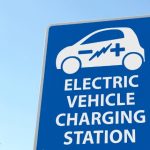The incoming administration under President-elect Donald Trump is set to reverse significant electric vehicle (EV) policies established during the Biden era. These changes aim to eliminate federal EV tax credits and introduce substantial tariffs on EV-related imports, potentially reshaping the automotive landscape in the United States. Industry stakeholders are closely monitoring these developments, given their potential to impact both domestic manufacturers and international trade relations.
Past reports have highlighted the Biden administration’s efforts to boost EV adoption through generous tax incentives and investments in green technology. In contrast, the current move by the Trump transition team seeks to dismantle these measures, reflecting a stark policy shift. This reversal may influence future investments and the overall growth trajectory of the EV market in the U.S.
Impact on Federal EV Tax Credits
The Trump administration plans to terminate the federal EV tax credits established under the Inflation Reduction Act (IRA). These credits have been instrumental in driving over $1 billion in EV sales nationwide.
“We are determined to end the electric vehicle mandate on day one,”
stated a spokesperson from the Trump transition team, emphasizing the administration’s commitment to this policy change.
Introduction of New Tariffs on EV Imports
In addition to ending EV tax credits, the administration intends to impose high tariffs on EV components imported from China, Canada, and Mexico. This move targets essential materials like lithium-ion batteries, which are predominantly sourced from these countries.
“These tariffs are necessary to protect American jobs and industries,”
a Trump official remarked, highlighting the protectionist motives behind the tariffs.
Potential Effects on the U.S. EV Market
Eliminating federal incentives and introducing tariffs could significantly increase the cost of electric vehicles for consumers, potentially reducing demand. Analysts predict that EV sales might decrease by up to 27%, resulting in approximately 317,000 fewer EVs registered annually.
“The removal of subsidies will make EVs less accessible to the average consumer,”
explained Stephanie Brinley, a principal automotive analyst at S&P Global.
Tesla, BMW, General Motors, and other major automakers with significant investments in EV production may face decreased profitability and slowed expansion. Companies like BMW are expanding their local battery production facilities to mitigate the impact, with plans to collaborate with Chinese battery maker CATL for future models.
“Our long-term strategy focuses on local production and establishing robust supply chains,”
BMW spokesperson Phil Dilanni stated.
The proposed policies could lead to layoffs and reduced shifts at existing manufacturing plants, affecting the workforce in states like Georgia, North Carolina, and Alabama. Additionally, future projects, such as Volkswagen’s Scout Motors in South Carolina and Rivian’s plant in Georgia, may encounter delays or cancellations due to increased production costs and uncertainty in the market.
These policy changes may also shift the global EV market dynamics, potentially giving China a competitive edge as the U.S. reduces its support for domestic EV growth. U.S. Energy Secretary Jennifer Granholm highlighted the risks of ceding market share to China, which currently produces over half of the world’s EVs.
The Trump administration’s approach presents a significant departure from the current trajectory of EV adoption in the U.S., raising concerns about the long-term sustainability and competitiveness of American automakers in the global market. Stakeholders will need to navigate these changes carefully to balance economic interests with environmental and technological advancements.
Reversing the IRA’s EV incentives and imposing new tariffs could hinder the United States’ progress in the electric vehicle sector. Industry players may need to innovate and adapt to maintain their market positions amid evolving policies. The full impact of these changes will unfold as the administration implements its agenda.










